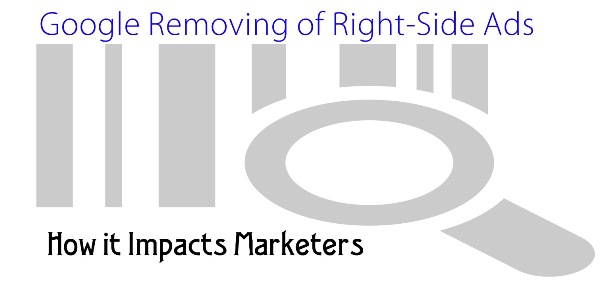Nowadays, for your business website to stay competitive, it’s no longer just enough to have a website up and running. You’ll also need to strive to keep your website responsive.
Otherwise, no matter how well made the content of your website is, it’ll still be unable to get the attention of visitors if it’s unresponsive. Your traffic will still be very poor.
Given the increasing number of people present on the Internet looking for just about any information they can find, this means that you have a population not to take for granted.
You can’t afford to have a non-responsive website, or else you may lose quite a significant market share.
When it comes to websites, there’s all that fuss now about the metrics set by Google. It’s that very important facet for you to please. After all, it’s on the search engines that your website will land after someone does a search.
If your site doesn’t make it big on these platforms, then you’re just wasting time and money trying to have one.
If you’ve just started a website right off the ground or you’re looking for major ways to tweak it, this article gives you some of the best insights you need. It’s the ultimate guide of the expert-proven tips to have a responsive website design.
5 Quick Responsive Web Design Tips
1. Plan Your Website Design

Just like when you’re planning a physical store, it’s important to begin first by planning your website design. No site is ever good without a good plan, as this serves as the foundation of your website.
It’s in the planning stage that you can identify every single aspect you need to include and even the specifications that you’re setting for your website design.
Generally, the planning stage starts with setting up a wireframe first, then moving on to the visual aspect, and then later on the coding part.
This can ensure that you’re not just creating the design that you want but also that it’s going to be easier for you to customize it seamlessly into your design.
Going through this step as thoroughly as possible can help ensure that your website design ends up as a responsive one.
Along with that, of the most crucial steps, you’ve got to undertake when planning your website design is to define your goals. You can never say that your website is responsive and effective when you don’t even know what your goals are for having one.
The fact that you’ve decided to create a website should mean that you already know what your purpose in mind for having one is. You’ve just got to be able to define this properly.
Here are a few examples of the goals that you could include in your website plan:
- Informing visitors about the existence of your products and services;
- Increasing your business profit, particularly if your website is solely for your e-commerce business;
- Generating leads, which you need for business growth.
2. Start with the Layout

Now that you have your plan in place, you can then move forward to your website’s layout. This is important, given that it should be structured to be pliant enough for any device.
This means that the aspect ratio, quality of the media, and other factors, shouldn’t be affected simply because the layout wasn’t given much thought into.
That said, here are insights on how to create a website layout that works:
- Leverage a visual hierarchy. This refers to the color, size, contrast, and arrangement of all the visual elements on your website. It points out the order in which things are seen by the human eye. When creating a visual hierarchy, the most important rule of thumb to follow is that the visitors’ attention should be brought towards all of the important elements first. Anything else that may not be considered as of paramount importance can be reserved for later on the site.
- Show one thing at a time. This means not overwhelming your homepage or any of your pages with too many things going on at a time. If you can show just one content at a time, then put that in as the limit. That way, it’s easier for your website visitors to understand what’s going on in your website. Remember that website visitors don’t like visual clutter. Rather, they prefer whitespace. You can give them more reason to stay on your website when it’s free of any clutter that distracts them from finding what they need on your site.
- Use people’s pictures. Whenever you include space in your layout for media or graphics, make it a point to include people’s pictures. This has the power to make your website appeal more to your visitors. After all, it gives them that hint that you’re human too, beyond your corporate face. It can make you more relatable to your website visitors.
Get started with the creation of your website’s layout on https://www.smartlydonewebsites.com and other sites.
3. Be Very Particular with Navigation

You can’t say that your website is responsive if it’s problematic to navigate through. So, you also need to prioritize website navigation. This refers to your roadmap for your website visitors so that they can easily find their way across your website.
When arranging your website’s navigation, a good rule of thumb to follow is that your website should be easy to navigate through, even by the most non-techy of all Internet users.
In doing so, your website is more attainable to a wider market. You don’t have to limit yourself only to the confines of those who know their way around the Internet a lot.
To ensure that this is met, here are some techniques as regards website navigation:
- Keep it consistent by having fixed elements on every page of your website. That way, it’ll be easier for your website visitors to have that recall as to the buttons they have to press to find their way around your website.
- Be sure your navigation links are clickable links, as there are certain terms in a website that pertain to tabs that have to be clickable. For instance, you can’t have a “Search” tab, where your website visitor can’t even type the information they’re searching for.
- Apply an ALT text in every image. This ALT text is helpful in ensuring that even those who are browsing from a slower website interface, whereby the images won’t load well, will know what the image contains, even when they aren’t able to see it.
4. Incorporate the Right Media
No website is ever complete and responsive without having enough media or images on it. After all, your website is going to end up looking extremely boring when it’s too text-heavy.
But just because you’ve got to put media on, this doesn’t mean that you should overwhelm it with too many graphics. Not every image placed on your website will serve to be beneficial, as there are those that’ll also make your site look cluttered.
Most importantly, when your website also has too much media on it, your page loading speed may get slower. This, then, would also affect your website responsiveness.
That said, here are some tips for applying when incorporating images and videos in your website:
- Make sure your images are relevant to the content you’re attaching them to. Otherwise, this mismatch will also just make your website look messy and unnecessarily heavy. If there’s no need for images or videos in certain content, then there’s no need to force it.
- Don’t just limit yourself to photos. There are also other forms of media you can apply, such as videos and infographics. To optimize your use of images and videos, switch it up regularly between putting in pictures and videos.
- Use multiple images of products. If you’re using your website for selling products, make sure that each product has a snapshot in multiple photos. Typically, you’ll want to showcase every angle of the product so that your customers will have a better glimpse and idea of the product’s features. This is another element of responsiveness, such that through going through that extra step, your website is now able to respond to all possible queries that your customers may have about your products.
5. Create Your Website to Be Mobile-Friendly
One of the biggest frustrations of website visitors is when a website’s page suddenly looks different and hard to access once they switch from a big screen to a mobile screen.
For instance, a website visitor could be browsing now from a computer screen during their work break. Then, while they’re on their way home to work while on the train, they’re browsing through their mobile phone.
Your website looks distorted and is now difficult to navigate through. When this happens, you aren’t able to meet the metrics of what a responsive design is.
So, above all others, be sure that you’re able to cater to all sorts of Internet visitors by making your website easily accessible even through a mobile device. This includes the layout and all the other elements on a website, such that the smaller screen won’t destroy any of it.
Conclusion
Now that you’ve got all these tips on your plate, you’re one step closer to creating a website that doesn’t just look good on a desktop screen but also in a mobile interface or any other device. Remember that Internet users today are getting more dynamic.
Their presence on the World Wide Web is stronger, given the wide array of possibilities they can do in that space. To survive in business, you’ve got to be present to this population of Internet users.
Hence the need to master the technique of coming up with a responsive website design, starting with the tips above.






